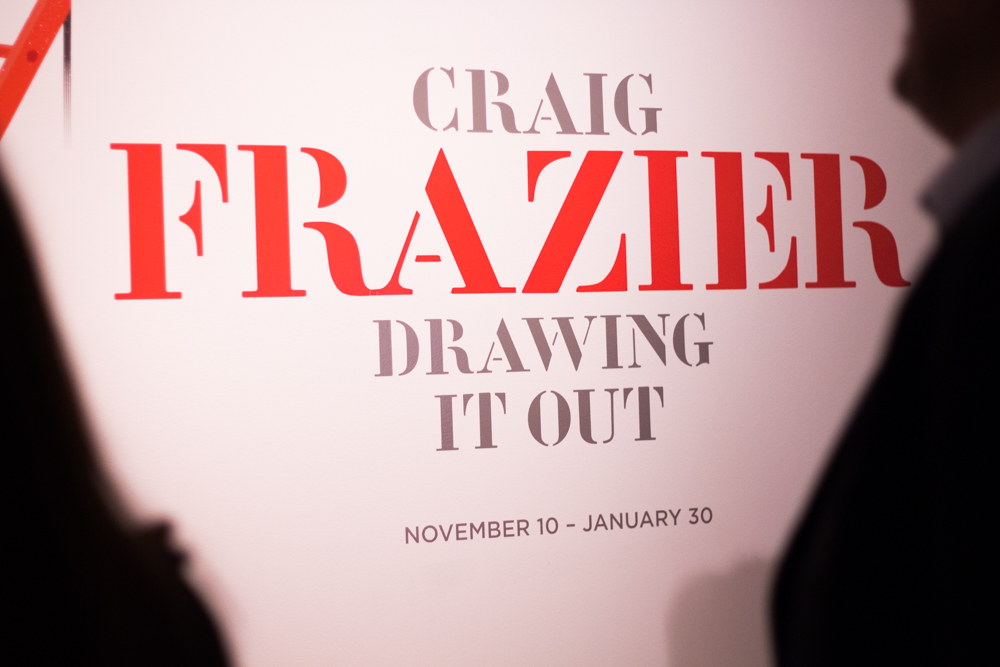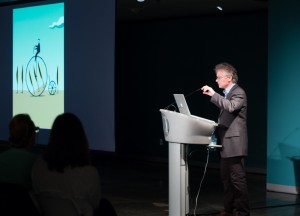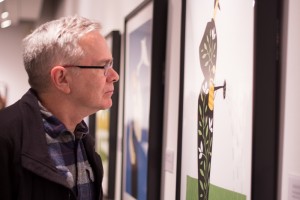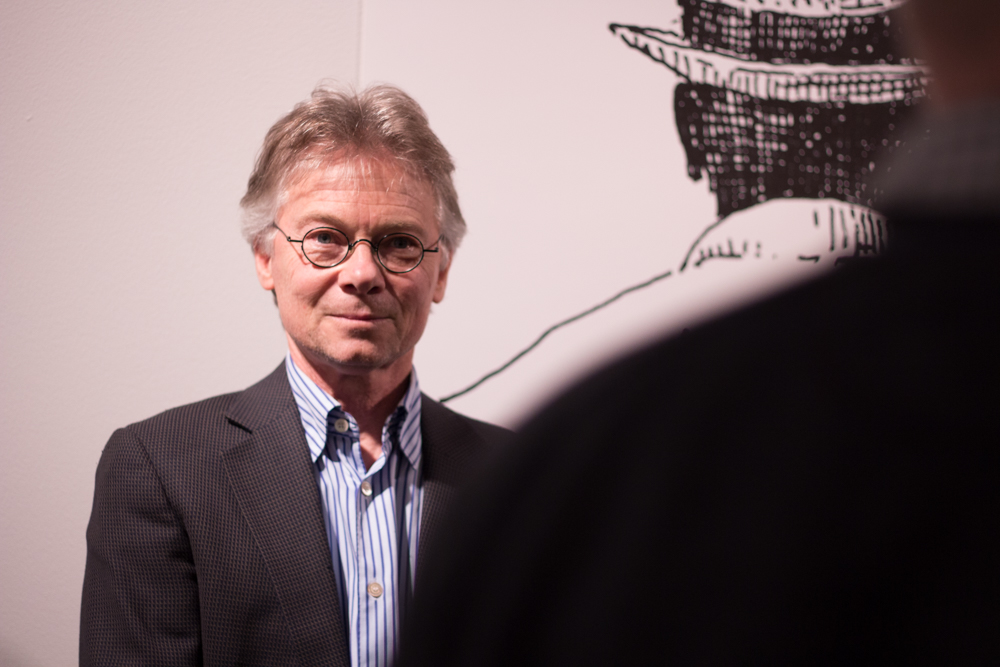
Written by Samelia Bankole, contributor
On Thursday, Jan. 15 in Event Space 4C, Craig Frazier, renowned designer and illustrator gave a lecture accompanied by a reception of his exhibition, “Drawing It Out,” in Gallery 1600. Frazier, a San Francisco Bay Area artist with a 36-year-long career, has done illustrations for magazines like “Time” and “The Wall Street Journal” and has worked with prestigious companies such as Boeing, Adobe and the U.S. Postal Service. His medium of choice is collage using a plastic film called amberlith.

In his lecture, Frazier made several good points about illustration with trademark wit and humor. With an accompanying PowerPoint, Frazier shared his work, both sketches and finished pieces, and also the work of illustrators that inspired him like Andre Matisse and Paul Rand. In his illustrations, Frazier’s style uses organic and natural shapes with a bold and graphic simplicity that make for interesting compositions.
For Frazier, “style is a repeated and consistent way we [designers] work.” This shows in his work, where his characters are stocky and whimsical figures interacting with the world. This can be seen in his illustrations “Late for the Sky” and “Internal Gardening.” The two outcomes that Frazier finds important in an illustration are: what is simple and the story. He strives for his images to invite viewers into the picture, to be surprised or curious about what’s going on in the image.

For illustrators to achieve this, he advises keeping elements in illustrations simple and not overloading the image with too many elements. But Frazier’s amazing ability to explore different metaphors and ideas in his work is his strength as an illustrator. Frazier told his SCAD audience that he is inspired by ordinary objects like brooms and traffic cones and takes the sketching process as an opportunity to find the story that he wants to tell.
His final piece of advice for SCAD students is to “draw until you discover what you want to contribute and work on your point of view.”




















